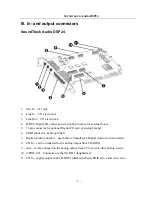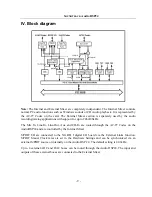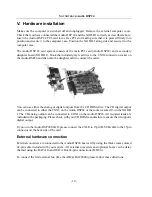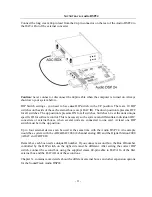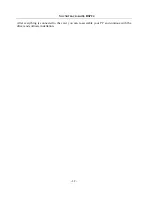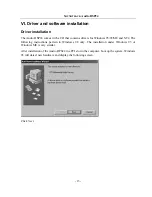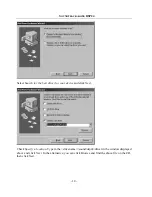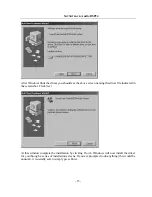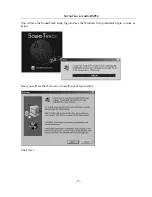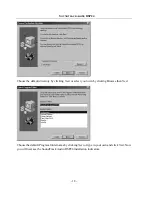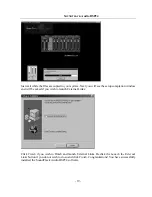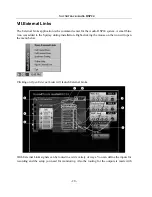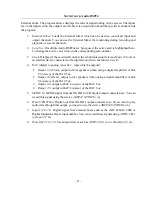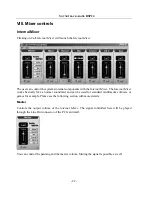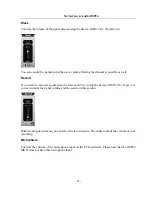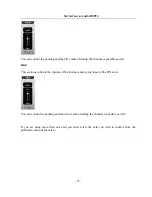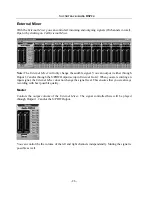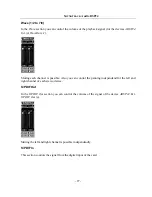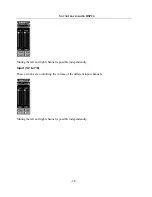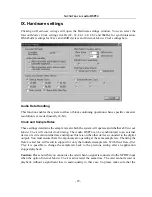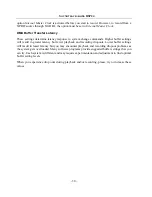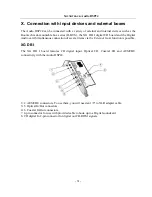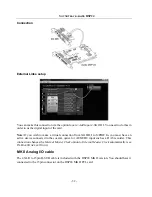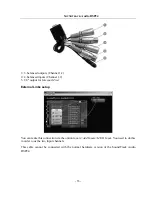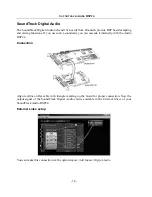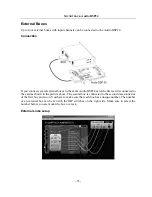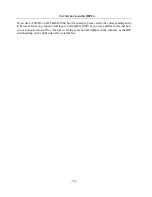
S
OUNDTRACK
Audio DSP24
- 21 -
External Links. The program always displays the current signal routing on the screen. The inputs
are on the right section, the outputs are left. Here is a description about the specific sections inside
the program:
1.
External Mixer
: Loads the External Mixer which can be used to control all input and
output channels. You can use the External Mixer for monitoring during recording and
playback of several channels.
2.
Card No.
: If multiple Audio DSP24s are being used, the active card is highlighted here.
To change the active card, click on the corresponding card number.
3.
Clock
: Displays if the card itself controls the synchronisation (
Internal Master Clock
) or
an external device connected to the digital inout (
External Master Clock
).
4.
DAC
(digital to analog converter – represents the outputs):
•
Output 1/2
(Front), output to front speakers (when using a digital amplifier) or Out
1/2 (stereo) of the DAC box.
•
Output 3/4
(Rear), output to rear speakers (when using a digital amplifier) or Out
3/4 (stereo) of the DAC box.
•
Output 5/6
, output to Out5/6 (stereo) of the DAC box.
•
Output 7/8
, output to Out7/8 (stereo) of the DAC box.
5.
S/PDIF In
: S/PDIF signal from the XG DB I or CD digital output connects here. You can
record this signal using the device
ADSP24 S/PDIF In (n)
.
6.
Wave S/PDIF Out
: Digital out from XG DB I output connects here. If you want to play
audio data through this output, you need to use the device
ADSP24 S/PDIF Out (n)
.
7.
Input 1/2
to
7/8
: Digital signal from external boxes such as the ADC & DAC 2000 or
Digital Modulator III per input number. You can record these signals using
ADSP24 Ext.
(n) Input1/2
, etc.
8.
WaveOut 1/2
to
7/8
: Use output devices such as
ADSP24 Ext. (n)
or
WaveOut1/2
, etc.

